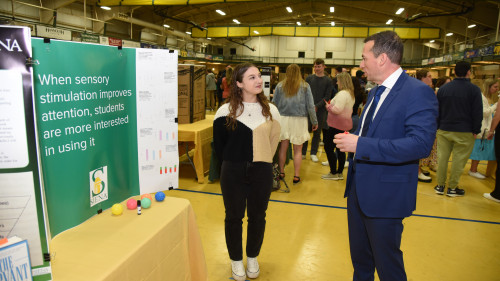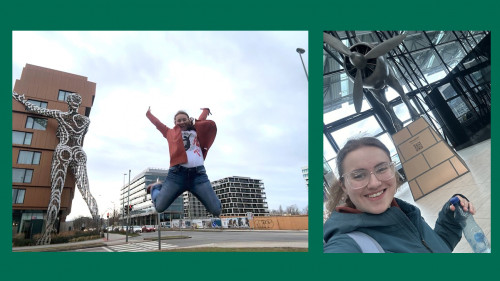

By Sarah Vistocco '13
As an associate professor of chemistry and biochemistry, Jason Hofstein, Ph.D. knows a thing or two about carbon dioxide and about a college class’ carbon footprint. He estimated that a course with 200 students produces 75,000 sheets of paper in one semester, which is costly for the environment and a college such as Siena which, a few years ago, was looking to decrease the amount of money spent annually on paper.
“Why don’t we just print less?” Hofstein proposed. Economically and ecologically minded, Hofstein developed a completely paperless course using iPads instead of paper for every aspect of the class, including his lectures, student note taking, exams and quizzes.
Hofstein rolled out his paperless plan last summer when he taught the 10-week Chemical Kinetics course. Instead of paper, his students used iPads. Upon completion of the course, Hofstein found that the students scored an average of ten points higher on a standardized test that he has given the past five years. Although he has not concluded why the heightened scores occurred, Hofstein said the students possibly became more engaged with the work. For example, as the professor projects a presentation during class, the students are able to follow along and directly manipulate their version of the presentation on their iPads.
Ken Swarner, who oversees technology for the School of Science, helped Hofstein develop a secure server which allowed him to control what students could see and do. Hofstein was able to use applications such as “Group Board,” which allowed students with internet connections to hear and see simultaneously how their classmates were working on problems. “I have actually held office hours at home,” Hofstein said. If a student had a question about a problem, they were able to take a picture and send it to Hofstein. He was then able to reply promptly with written directions for the students.
After the success of the course, Hofstein asked seven of his students to describing in writing how they would use iPads if they were lent the device. Hofstein reviewed the proposals and chose to supply them with iPads purchased by Siena’s School of Science. These students can now use the electronic devices to take notes, download presentations and even buy and store full textbooks for this year’s classes.
“It weighs way less than five textbooks and five notebooks,” Josh Kranick ’13 said about his iPad. Kranick completed the Chemical Kinetics course with Hofstein and now uses his iPad every day.
Paige Maccabee ’13 and Michael Scudder ’13 also carry their iPads daily. They agreed that, although the benefit of portability was paramount, using iPads has shown them how much paper they would normally waste.
Hofstein is also staying ahead of the technology curve. During lectures, he used programs that will not be released commercially for up to two years. Hofstein contacted the representative of China-based software company, NewLine. He was able to purchase the software to utilize for “evaluation purposes” in the classroom. With applications such as “Slide Shark,” Hofstein has the ability to conduct a class while adding details to images as the lecture progresses. Students can listen to his lecture and follow along with the slides they have downloaded while adding their own notes.
The only paper generated by Hofstein’s summer class was the one he presented on the subject of implementing a paperless classroom at the Higher Education Teaching Learning (HETL) Conference in Florida. Hofstein hopes that, in the future, iPads can be used by students and professors in all subject areas to promote academic growth and reduce paper waste.

